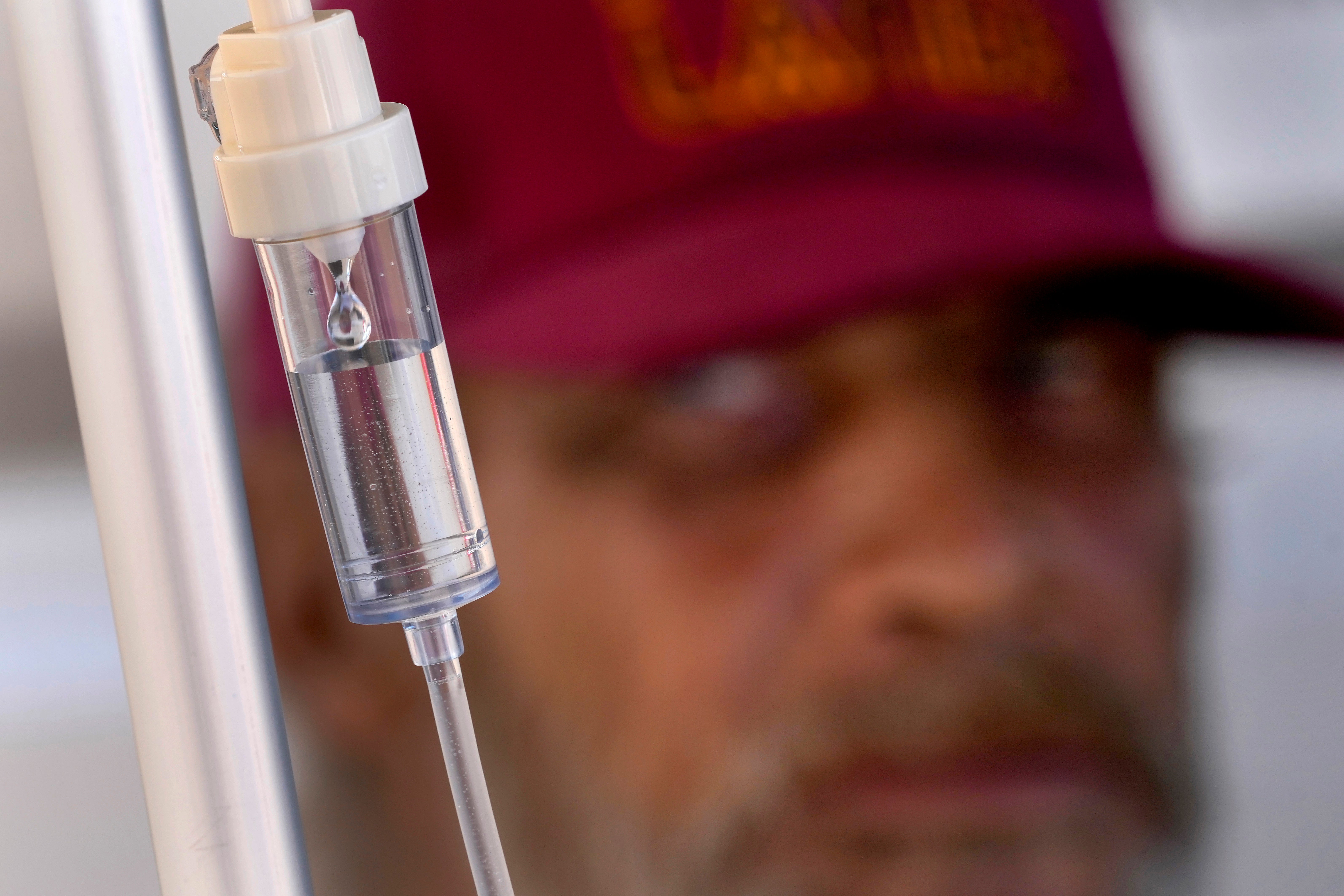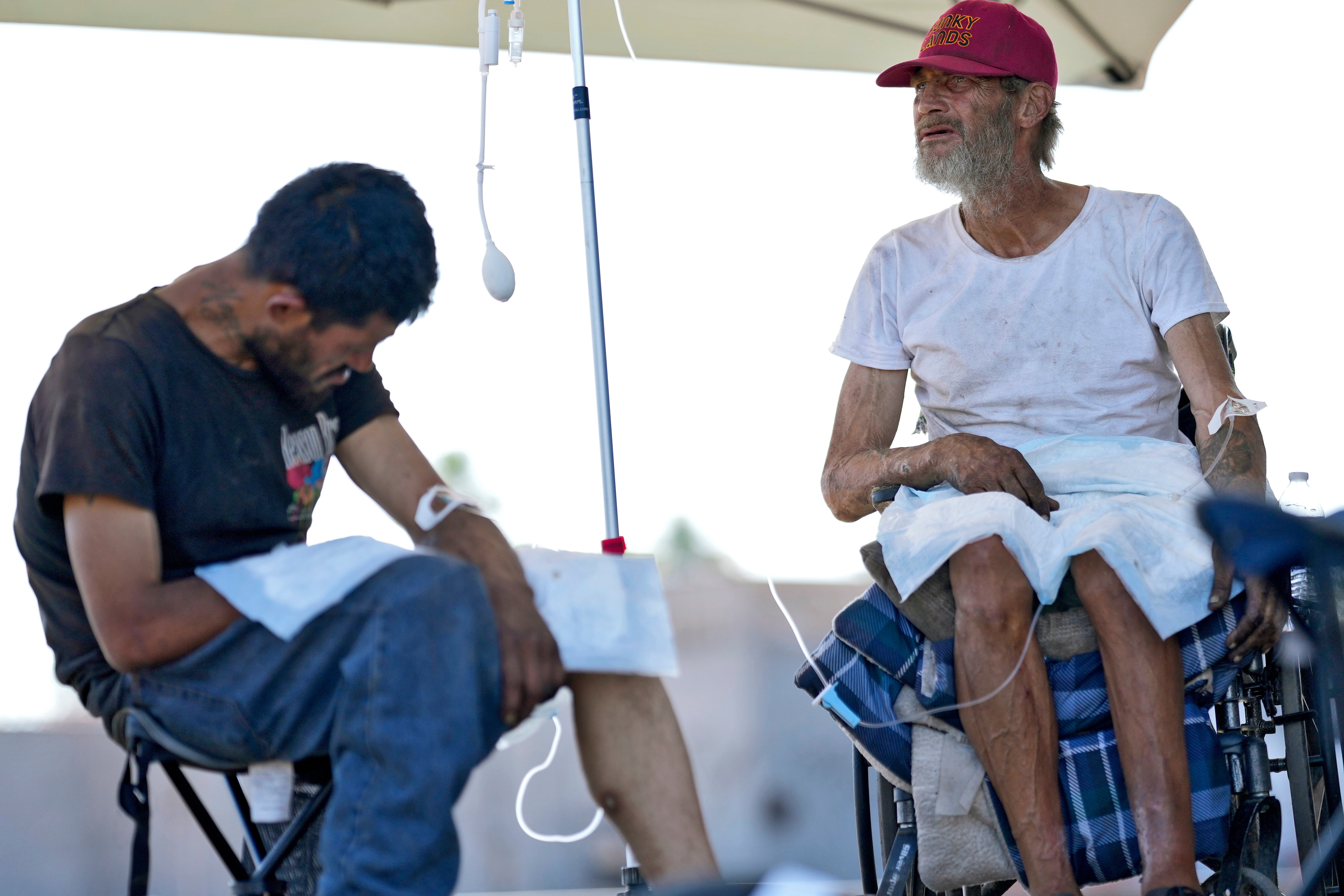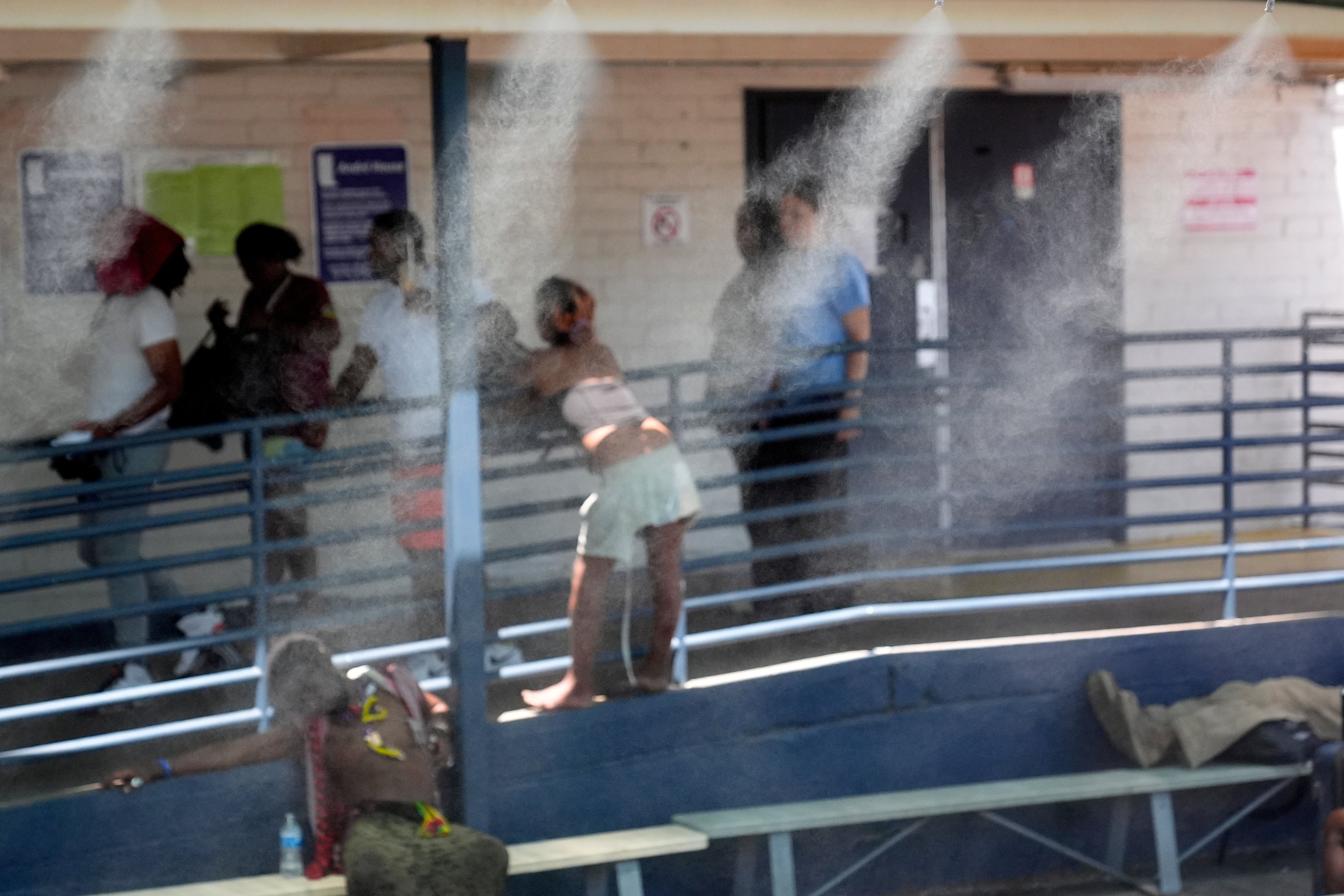How street medicine teams use lifesaving IV drips to protect homeless during extreme heat
As temperatures reach triple digits in metro Phoenix, heat illness is especially deadly for people who live outside under the broiling desert sun
Your support helps us to tell the story
From reproductive rights to climate change to Big Tech, The Independent is on the ground when the story is developing. Whether it's investigating the financials of Elon Musk's pro-Trump PAC or producing our latest documentary, 'The A Word', which shines a light on the American women fighting for reproductive rights, we know how important it is to parse out the facts from the messaging.
At such a critical moment in US history, we need reporters on the ground. Your donation allows us to keep sending journalists to speak to both sides of the story.
The Independent is trusted by Americans across the entire political spectrum. And unlike many other quality news outlets, we choose not to lock Americans out of our reporting and analysis with paywalls. We believe quality journalism should be available to everyone, paid for by those who can afford it.
Your support makes all the difference.Alfred Handley leaned back in his wheelchair alongside a major Phoenix freeway as a street medicine team helped him get rehydrated with an intravenous saline solution dripping from a bag hanging on a pole.
Cars whooshed by under the blazing 96-degree morning sun as the 59-year-old homeless man with a nearly toothless smile got the help he needed through a new program run by the nonprofit Circle the City.
“It’s a lot better than going to the hospital,” Handley said of the team that provides health care to homeless people. He's been treated poorly at traditional clinics and hospitals, he said, more than six years after being struck by a car while he sat on a wall, leaving him in a wheelchair.
Circle the City introduced its IV rehydration program as a way to protect homeless people from life-threatening heat illness as temperatures regularly hit the triple-digits in America's hottest metro. Homeless people accounted for nearly half of the record 645 heat-related deaths last year in Maricopa County, which encompasses metro Phoenix.
Dr. Liz Frye, vice chair of the Street Medicine Institute that provides training to hundreds of health care teams worldwide, said she didn't know of groups other than Circle the City administering IVs on the street.
"But if that’s what needs to happen to keep somebody from dying, I’m all about it,” Frye said.

As summers grow warmer, health providers from San Diego to New York are being challenged to better protect homeless patients.
Even the Boston Health Care for the Homeless Program, featured in last year's book, “Rough Sleepers," now sees patients with mild heat exhaustion in the summer after decades of treating people with frostbite and hypothermia during the winter, said Dr. Dave Munson, the street team's medical director.
“It's certainly something to worry about,” said Munson, noting that temperatures in Boston hit 100 degrees with 70 percent humidity during June's heat wave. Homeless people, he said, are vulnerable to very hot and very cold weather not only because they live outside, but they often can't regulate body temperature due to medication for mental illness or high blood pressure, or because of street substance use.
The Phoenix team searches for patients in homeless encampments in dry riverbeds, sweltering alleys and along the canals that bring water to the Phoenix area. About 15 percent are dehydrated enough for a saline drip.
“We go out every day and find them,” said nurse practitioner Perla Puebla. “We do their wound care, medication refills for diabetes, antibiotics, high blood pressure.”
Puebla’s street team ran across Handley and 36-year-old Phoenix native Phillip Enriquez near an overpass in an area frequented by homeless people because it’s near a facility offering free meals. Across the road was an encampment of tents and lean-tos along a chain-link fence.

Enriquez sat on a patch of dirt as Puebla started a drip for him. She also gave him a prescription for antibiotics and a referral to a dentist for his dental infection.
Living outside in Arizona’s broiling sun is hard, especially for people who may be mentally ill or use sedating drugs like fentanyl that make them less aware of surroundings. Stimulants like methamphetamine contribute to dehydration, which can be fatal.
Temperatures this year have reached 115 degrees (45 Celsius) in metro Phoenix, where six heat-related deaths have been confirmed through June 22. Another 111 are under investigation.
“The number of patients with heat illnesses is increasing every year,” said Dr. Aneesh Narang, assistant medical director of emergency medicine at Banner Medical Center-Phoenix, which treats many homeless people with heat stroke.
Narang's staff works frequently with Circle the City, whose core mission is providing respite care, with 100 beds for homeless people not well enough to return to the streets after a hospital stay.
Extreme heat worldwide requires a dramatic response, said physician assistant Lindsay Fox, who cares for homeless people in Albuquerque, New Mexico, through an initiative run by the University of New Mexico’s School of Medicine.
Highs in Albuquerque can hit the 90s and don't fall enough for people living outside to cool off overnight, she said.

Serious heat stroke is far more common in metro Phoenix, where Circle the City is now among scores of health programs for the homeless in cities like New York, San Diego and Spokane, Washington.
Circle the City, founded in 2012 by Sister Adele O’Sullivan, a physician and member of the Sisters of St. Joseph Carondelet, now has 260 employees, including 15 doctors, 13 physician assistants and 11 nurse practitioners. It annually sees 9,000 patients.
